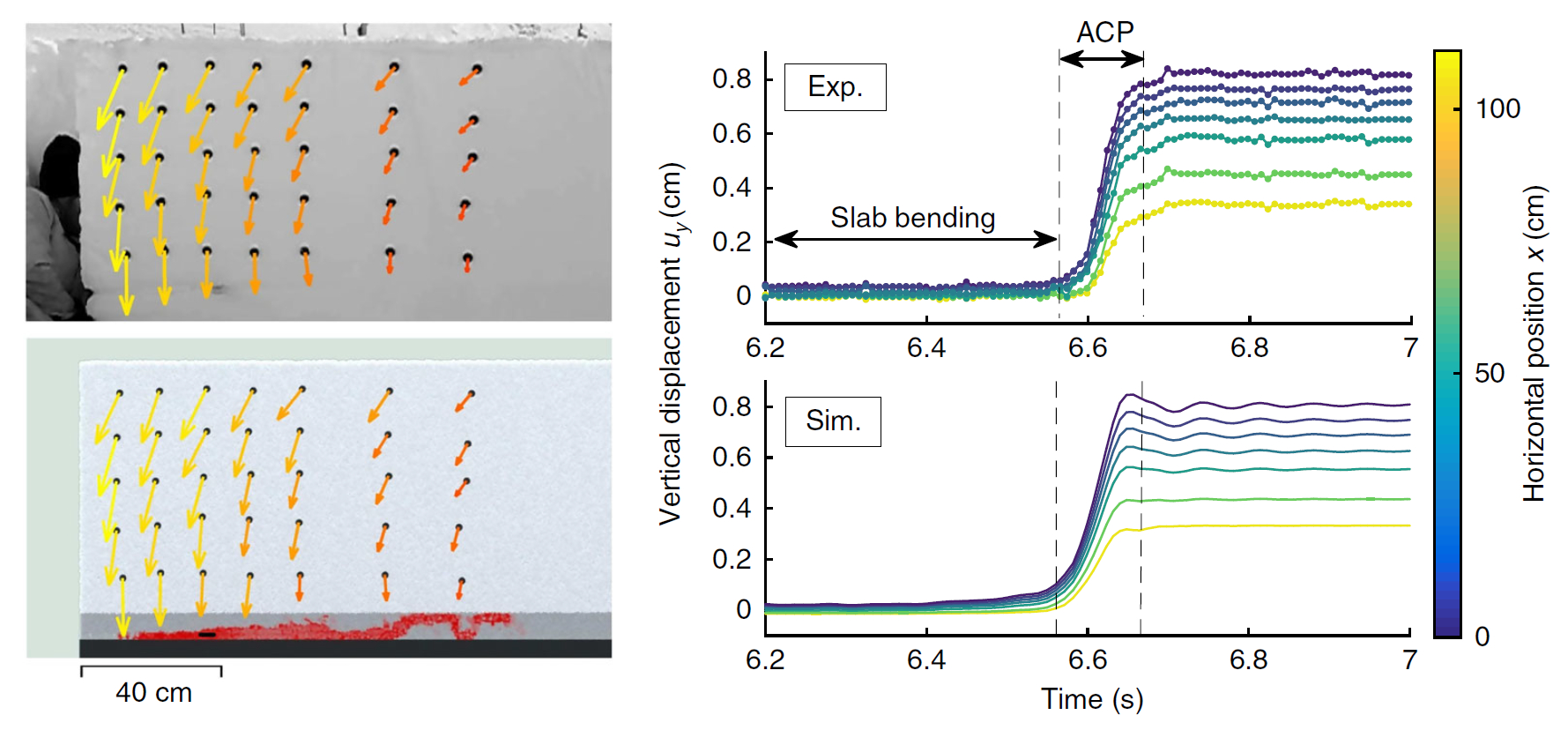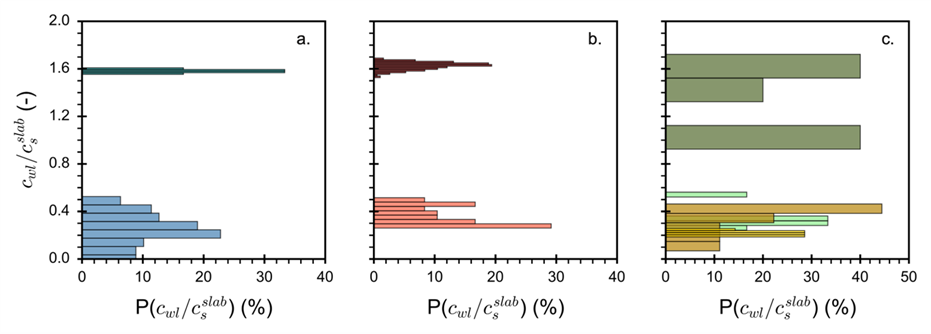Crack propagation in snow slab avalanche release
Snow slab avalanches, characterized by a distinct, broad fracture line, are released following anticrack propagation in highly porous weak snow layers buried below cohesive slabs. The anticrack mechanism is driven by the volumetric collapse of the weak layer, which leads to the closure of crack faces and to the onset of frictional contact. We develop novel numerical methods to improve our understanding of the onset and dynamics of crack propagation in snow. Two types of numerical approaches are considered: Discrete (Discrete Element Method: DEM) and continuum-based (Material Point Method: MPM).

On the basis of snow fracture experiments, full-scale avalanche measurements and different types of numerical simulations (MPM and DEM), we report the existence of a transition from sub-Rayleigh anticrack to supershear crack propagation. This transition follows the Burridge–Andrews mechanism, in which a supershear daughter crack nucleates ahead of the main fracture front and eventually propagates faster than the shear wave speed. Furthermore, we show that the supershear propagation regime can exist even if the shear-to-normal stress ratio is lower than the static friction coefficient as a result of the loss of frictional resistance during collapse. This finding shows that snow slab avalanches have fundamental similarities with strike-slip earthquakes.

References:
Gaume, J., Gast, T., Teran, J., Van Herwijnen, A., & Jiang, C. (2018). Dynamic anticrack propagation in snow. Nature communications, 9(1), 3047.
Trottet, B., Simenhois, R., Bobillier, G., Bergfeld, B., van Herwijnen, A., Jiang, C., & Gaume, J. (2022). Transition from sub-Rayleigh anticrack to supershear crack propagation in snow avalanches. Nature physics, 18(9), 1094-1098.
Bobillier, G., Bergfeld, B., Dual, J., Gaume, J., van Herwijnen, A., & Schweizer, J. (2021). Micro-mechanical insights into the dynamics of crack propagation in snow fracture experiments. Scientific reports, 11(1), 1-15.